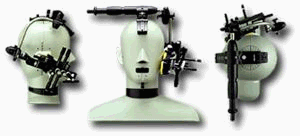Hi, I need to make an 'anechoic' test chamber to measure the response of different celular phones. The lowest frecuency to be reproduced in it is about 200 Hz. How big should I make this chamber?. I´m planning to cover the interior with auralex 4" or 3" studiofoam wedges to kill standing waves. Any suggestions?.
Looks like the NRC halves between 400 and 200.
I just looked at the specs for the 4" studio foam,
The down side seems to be that the NRC is only .62 at 200 Hz, half of what they spec for the rest of the voice band.
I think that Illbruck has a 6" Sonex product that might spec a little better. This portion of their sight seems to be off line at the moment.
If you can suspend the foam wedges a few inches in front of some duct liner or similar product you can significantly increase the low frequency absorption. Coarse wire screen makes a good surface to glue the foam to.
I imagine that the chamber needs to be tabletop. Do you have enough space and money to do a box-in-box? This would help to increase isolation.
There is a good article in this months Sound and Vibration about what some guys at Georgia Tech did to qualify a very large anechoic chamber that they built.
Sounds like a fun project. Are you using the Bruel and Kjaer cell phone test jig?
I just looked at the specs for the 4" studio foam,
The down side seems to be that the NRC is only .62 at 200 Hz, half of what they spec for the rest of the voice band.
I think that Illbruck has a 6" Sonex product that might spec a little better. This portion of their sight seems to be off line at the moment.
If you can suspend the foam wedges a few inches in front of some duct liner or similar product you can significantly increase the low frequency absorption. Coarse wire screen makes a good surface to glue the foam to.
I imagine that the chamber needs to be tabletop. Do you have enough space and money to do a box-in-box? This would help to increase isolation.
There is a good article in this months Sound and Vibration about what some guys at Georgia Tech did to qualify a very large anechoic chamber that they built.
Sounds like a fun project. Are you using the Bruel and Kjaer cell phone test jig?
Attachments
what type of measurements are you planning on taking? Do you need to test the response of the phones at a given point, or does the mic need to move during the measurements?
What are you hoping to get out of these measurements?
Right now I am qualifying the new semi-anechoic chamber at GA Tech. I was actually in there earlier today.
You should base the size of your chamber on the output you are expecting. From a cell phone I wouldn't expect high output, but the smaller you go, the less anechoic-like you can expect the response.
A good starting point is sturdy outside walls (MDF would be good for this). Make another wall inside the MDF walls (particle board would probably be better here). The walls should be separated enough that a layer or two of fiberglass insulation can fit between the walls. On the inside of the particle board walls use the acoustic foam wedges. If 4" is the biggest you can find, use it. If you can find bigger use that. You may want to put insulation on the outside of the MDF walls as well.
Wherever you put the chamber, make sure there is not much background noise. After you complete the chamber, you should do SPL measurements on the inside with a sound source on the outside. If the source on the outside has noticeable effect, you will need more damping from outside sound.
That should give you a good start. I'll see if I can find the journals describing anechoic chamber qualifications that I had to read when I first got my job.
Hope that helps,
Austin
What are you hoping to get out of these measurements?
Right now I am qualifying the new semi-anechoic chamber at GA Tech. I was actually in there earlier today.
You should base the size of your chamber on the output you are expecting. From a cell phone I wouldn't expect high output, but the smaller you go, the less anechoic-like you can expect the response.
A good starting point is sturdy outside walls (MDF would be good for this). Make another wall inside the MDF walls (particle board would probably be better here). The walls should be separated enough that a layer or two of fiberglass insulation can fit between the walls. On the inside of the particle board walls use the acoustic foam wedges. If 4" is the biggest you can find, use it. If you can find bigger use that. You may want to put insulation on the outside of the MDF walls as well.
Wherever you put the chamber, make sure there is not much background noise. After you complete the chamber, you should do SPL measurements on the inside with a sound source on the outside. If the source on the outside has noticeable effect, you will need more damping from outside sound.
That should give you a good start. I'll see if I can find the journals describing anechoic chamber qualifications that I had to read when I first got my job.
Hope that helps,
Austin
- Status
- This old topic is closed. If you want to reopen this topic, contact a moderator using the "Report Post" button.
